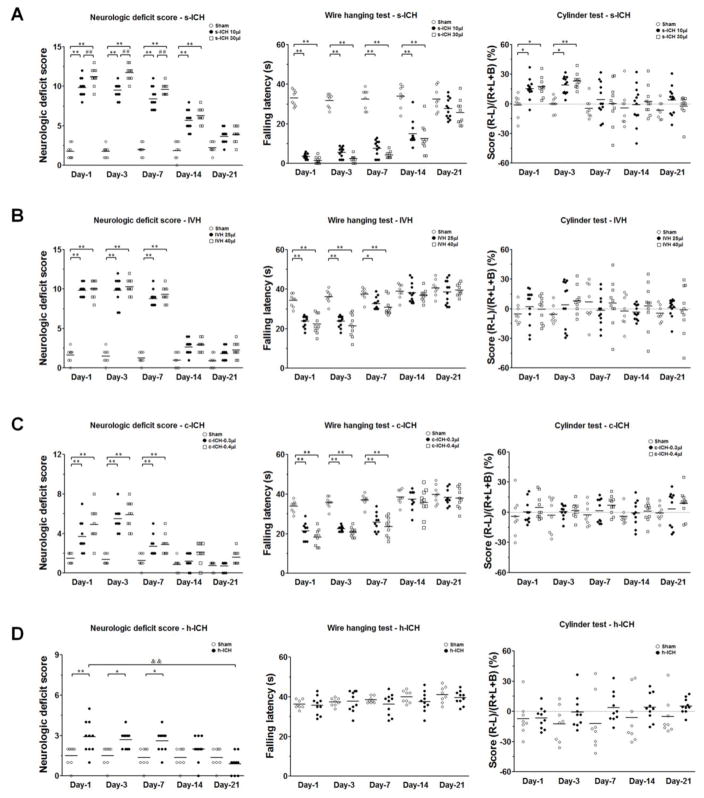Fig. 6.
Changes in locomotor function after ICH. (A) Mice in the s-ICH (10 μl and 30 μl) groups had significantly greater neurologic deficit scores than did mice in the sham group at all time-points. Neurologic deficit scores were significantly higher in the 30-μl s-ICH group than in the 10-μl s-ICH group on days 1, 3, and 7 post-ICH (n=10–12 mice/group). Gripping and forelimb strength were significantly impaired in the s-ICH (10 μl and 30 μl) mice at all time points (n=10–12 mice/group). In the cylinder test, scores were higher in s-ICH (10 μl and 30 μl) mice than in sham mice on days 1 and 3 post-ICH, but no difference was observed between the 30-μl and 10-μl s-ICH mice. The mice exhibited complete recovery on day 7 post-ICH (n=10–12 mice/group). (B) Mice in the IVH (25 μl and 40 μl) groups had significantly higher neurologic deficit scores and shorter falling latency in the wire-hanging test than did sham animals on days 1, 3, and 7 post-ICH. However, falling latency in the wire-hanging test did not differ between the 40-μl and the 25-μl IVH mice on those days (n=10–12 mice/group). The mice in each group exhibited no differences in the cylinder test (n=10–12 mice/group, P > 0.05). (C) Mice in the c-ICH groups exhibited significantly higher neurologic deficit scores than did sham animals on days 1, 3, and 7 post-ICH (n=10 mice/group) as well as marked deficits in gripping and forelimb strength (n=10 mice/group). The mice did not exhibit differences in the cylinder test (n=10 mice/group, P > 0.05); (D) Mice in the h-ICH group had significantly higher neurologic deficit scores than did sham animals on days 1, 3, and 7 post-ICH (n=10 mice/group). In the wire-hanging test and the cylinder test, no difference was observed between h-ICH mice and sham animals at any time point (n=10 mice/group, all P > 0.05). All data are presented as mean ± SD; *P < 0.05, **P < 0.01 vs. respective Sham group; ##P < 0.01 vs. 10-μl s-ICH group; &&P < 0.01 vs. h-ICH group day 1.

